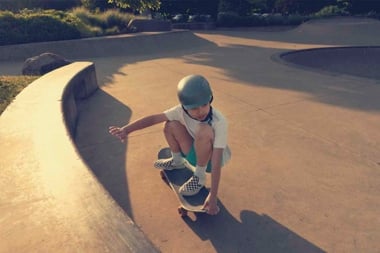
Standing in the same place or walking about all day is a fact of life for many Canadians. For these movers and shakers, foot care and foot health are paramount.
Standing in the same place or walking about all day is a fact of life for many Canadians in a variety of occupations, including health care workers, teachers, retail workers, and those in food service or manufacturing. For these movers and shakers, foot care is paramount for preventing injury and discomfort.
Our feet are the foundation of our bodies—which is why it’s so important to be aware of the conditions that can develop due to improper foot care, and what we can do to prevent them.
Feet or fashion?
Alison Chow, a registered chiropodist practising in a north Toronto naturopathic and chiropody clinic, sees many women and men who are tied to their pointy-toed stilettos or tight Italian loafers. High heels in particular, she says, cause a number of painful foot issues because the shoe pushes body weight forward while simultaneously constricting the toes and shortening the calf muscle.
The calf muscle, Chow explains, is connected to the plantar fascia, which supports the arch of the foot. Combined with a lack of cushioning, a weak, unsupported arch results in more stress on foot joints. Foot and leg fatigue sets in, and pretty soon the whole body starts to feel tired.
Standing series of events
When subject to prolonged standing, the parts of the body that are closest to the ground start to feel the signs of wear and tear first because they bear the greatest cumulative effect of gravity. Hence, the feet, followed by the calves, the shins, and the knees, are the most vulnerable to chronic pain and joint deformities. Our feet, and the dozens of tiny joints in it, are compressed by the whole weight of our body.
Gravity also encourages blood and lymph fluid to pool in our lower extremities. Our feet and legs need muscle movement to pump body fluids back up to the heart and lungs. However, insufficient venous return often occurs if a person remains stationary for a long time.
Stagnant fluid causes swelling or edema that can lead to changes to the skin and nails of the foot. Varicose veins, a common problem among women, are also linked to poor blood flow and occupational standing.
Consequences of occupational standing
Plantar fasciitis and Achilles tendonitis
One of the most common inflammatory conditions among those who work on their feet is plantar fasciitis. The plantar fascia is the thick muscle that runs along the base of the foot connecting the heel to the rest of the foot. In plantar fasciitis the primary symptom is pain on the bottom of the heel.
Other inflammatory foot conditions that can be made worse by occupational standing include Achilles tendonitis and Haglund’s bump (“pump bump”), a bony enlargement on the back of the heel irritated by rigid footwear, including ice skates, pumps, and dress shoes.
Bunions and hammertoes
Prolonged standing or walking in poor footwear can also cause foot bone and joint deformities. Bunions and hammertoes originate from unequal load bearing in the feet, which can be the result of inherited foot shape or poorly chosen footwear. According to Chow, the bones and joints try to compensate for this imbalance and end up in an unnatural position. In the case of bunions, the joint of the big toe becomes enlarged; in hammertoes, the toe muscles tighten, causing the bones to become bent.
Blisters, corns, and calluses
Blisters, corns, and calluses are also a common source of discomfort for those who spend all day in inappropriate footwear. New shoes in particular are a culprit for blisters, as a shoe that’s not broken in will cause friction on the skin of the heel or big toe. Excessive friction or pressure from ill-fitting shoes can also cause thick-skinned corns and calluses to form on the balls or toes of the feet. Removing the pressure or friction with shoe modifications is the most effective way to address these issues.
Functional footwear
Chow also specializes in making therapeutic adjustments to footwear. She says there are many options for each common foot problem we experience.
For example, plantar fasciitis calls for shoes with good arch support. Running shoes tend to be the best choice; but don’t choose a runner that’s too soft, as it could make heel pain worse. Achilles tendonitis and “pump bump” can be alleviated by wearing clogs, mules, or other open-back shoes. You can also add heel pads to your shoe to elevate and cushion
the heel.
Bunions and hammertoes require more space for the toes and the front of the foot. This can be accomplished by taking your current shoe to a pedorthist to be stretched or fitted with a sole split. Arch support insoles, bubble patches, or toe spacers can also reduce the pressure on toe joints.
Corns and calluses also require wider, rounder shoes that have extra padding such as gel sleeves in the toe box. A deeper shoe is another possible solution a pedorthist can provide by excavating or removing the seams on an existing pair.
| When to consider orthotics The following symptoms may be remedied with orthotics. Consider booking an appointment with a chiropodist if you are experiencing or have been diagnosed with:
|
| chi•'rop•o•dist n An expert in all things feet, licensed to diagnose, assess, and treat all diseases of the foot and lower leg without medical referral. |
| Self-care for sore feet Chow recommends the following dos and don’ts for self foot care. DO moisturize your feet, but DO practise daily stretching of calf muscles, and DO use a foot file or a pumice stone while you’re in the shower, but DO monitor your feet regularly for any skin or nail changes, and DO elevate your feet if you tend to get swelling at day’s end, and DO have your feet checked annually by a chiropodist if you are diabetic, and |




